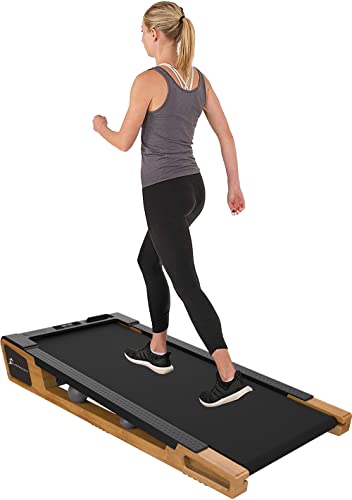The Allure of Treadmills Without Electricity: A Comprehensive Guide
In a world increasingly dominated by state-of-the-art physical fitness gizmos, the simplicity and functionality of a treadmill that does not require electricity may seem like a throwback. Nevertheless, treadmills without electricity-- frequently referred to as "manual treadmills"-- have actually gotten substantial appeal amongst fitness lovers looking for a more simple, eco-friendly workout option. This post explores the myriad benefits, functions, and factors to consider surrounding manual treadmills, in addition to answering typical questions from prospective purchasers.
What is a Manual Treadmill?
A manual treadmill is a piece of exercise equipment that permits users to walk or run without needing electrical power. Rather than motorized treadmills that move the belt for you, manual treadmills count on the user's own effort to move the belt forward. Here's a quick contrast between manual and motorized treadmills:
| Feature | Manual Treadmill | Motorized Treadmill |
|---|---|---|
| Source of power | None | Electricity needed |
| Personnel Mechanism | User-powered | Motor-driven |
| Expense | Normally cheaper | Usually more expensive |
| Portability | Extremely portable | Frequently heavier, less portable |
| Upkeep | Low | Needs more upkeep |
| Workout Intensity | Greater (more effort) | Can be adjusted |
Advantages of Using a Manual Treadmill
Affordable:
- Manual treadmills are generally much more affordable than their electrical counterparts. With a lower initial financial investment and no continuous electricity costs, these treadmills can be an exceptional alternative for budget-conscious individuals.
Eco-Friendly:
- As there are no motors or electrical components included, manual treadmills are a sustainable option. They do not consume nonrenewable fuel sources and leave a smaller sized carbon footprint.
Versatile Workout:
- Because they need the user to develop their own momentum, manual treadmills can provide more intense workouts, ideal for those looking to increase their stamina and strength.
Mobility:
- Manual treadmills are often lighter and much easier to transport. They permit users to quickly keep them away or move them from one area to another.
Decreased Risk of Injury:
- By enabling for a more natural running motion, manual treadmills can help reduce the threat of injury compared to motorized choices. Users have control over their rate and can stop or slow down immediately.
Key Features to Consider
When considering a manual treadmill, certain functions ought to be taken into consideration:
- Belt Quality: Look for a non-slip, resilient surface area that offers adequate grip for safety during exercises.
- Incline Levels: Many manual treadmills featured adjustable incline features. Walking Pad Non Electric can increase exercise strength.
- Dimensions: Space can be a restriction, so taking a look at the treadmill's footprint is vital.
- Weight Capacity: Always check the maker's weight recommendations to ensure security and longevity.
- Display Monitor: Some manual treadmills consist of standard displays for tracking elapsed time, distance, and calories burned.
| Feature | Description |
|---|---|
| Belt Quality | Non-slip and long lasting materials for security |
| Incline Levels | Adjustable settings for increased workout trouble |
| Dimensions | Size and weight for ease of storage and transport |
| Weight Capacity | Guarantee the treadmill accommodates the user's weight conveniently |
| Display Monitor | Optional performance tracking includes |
Selecting the Right Manual Treadmill
Provided the variety of manual treadmills available on the market, choosing the best one includes evaluating personal physical fitness goals and requirements. Here's a simplified list to guide consumers:
- Assess your physical fitness goals: Are you intending for weight-loss, endurance, or general physical fitness?
- Consider the offered area: Ensure the treadmill will fit well in your designated workout area.
- Examine for features: Look for adjustable incline settings or added innovation such as a distance tracker.
- Research study brand names and reviews: Read about the experiences of other users to gauge the dependability and toughness of the model you're considering.
- Set a budget plan: Compare different designs while keeping your budget in mind.
Regularly Asked Questions (FAQ)
1. Are manual treadmills ideal for all physical fitness levels?
Yes, manual treadmills accommodate various physical fitness levels. Novices can begin at a slower pace, while advanced users can increase strength and speed.
2. How do manual treadmills impact calorie burn as compared to motorized ones?
Manual treadmills may result in higher calorie burn during exercises, as users should put in more effort to move the belt.
3. Do I need to assemble a manual treadmill?
The majority of manual treadmills come partly put together, however you'll likely require to finish some assembly depending upon the model.
4. Can I carry out interval training on a manual treadmill?
Absolutely! Manual treadmills are excellent for interval training given that users can easily change their speed and start/stopping motions.
5. How do I maintain a manual treadmill?
Upkeep is basic: routine cleaning of the belt and frame, looking for wear and tear, and ensuring empty storage when not in use.
Manual treadmills offer many advantages, making them an appealing alternative for lots of fitness enthusiasts. Their energy-efficient style, integrated with the ability to offer effective exercises, has cemented their location in home physical fitness routines. With a clear understanding of their features and advantages, individuals can make an educated decision about whether a manual treadmill is the best choice for their health journey.
The simple appeal of manual treadmills-- combined with their cost-effectiveness and sustainability-- guarantees they remain appropriate in today's physical fitness market, providing an engaging option to electric models.

